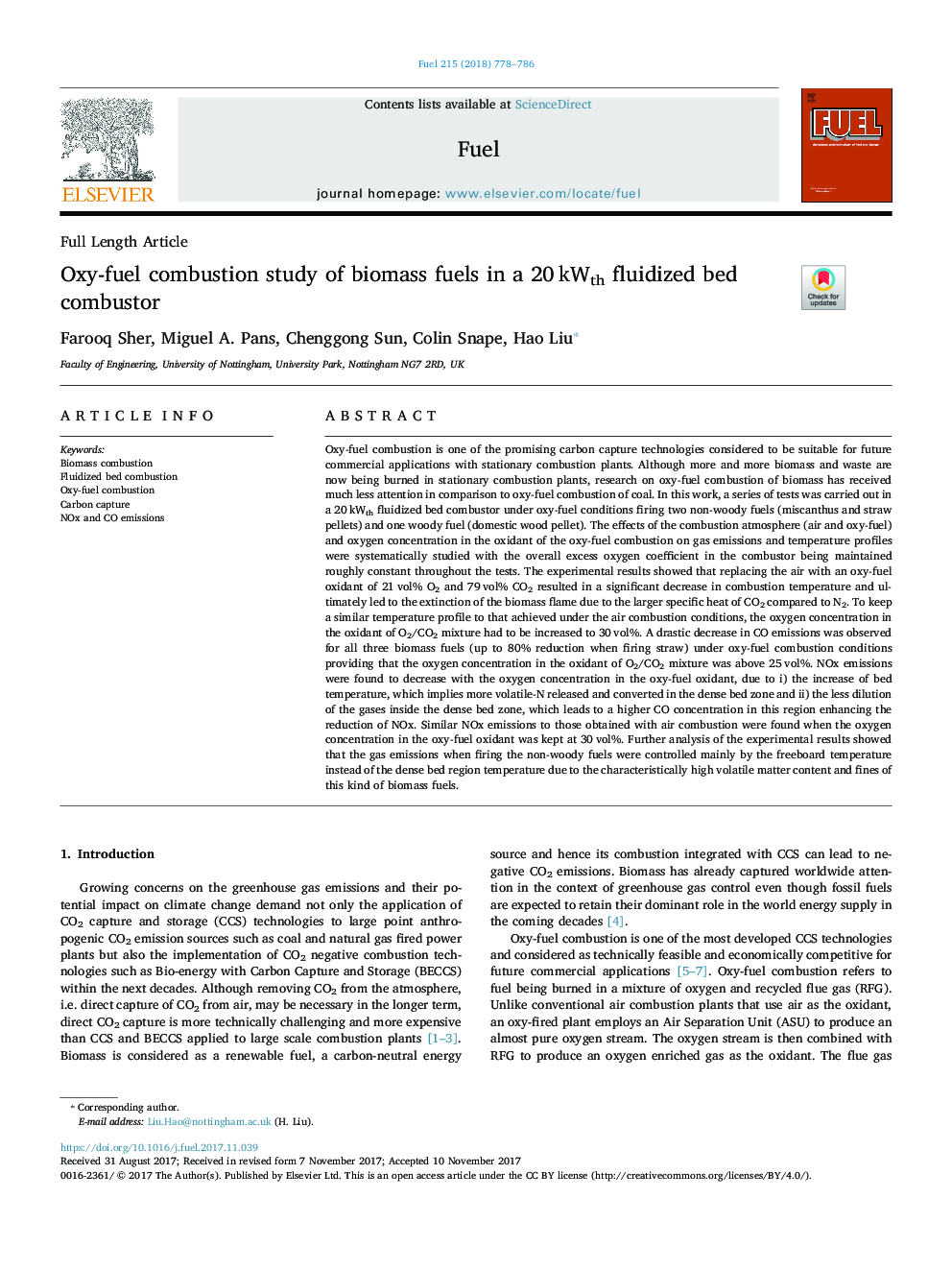| کد مقاله | کد نشریه | سال انتشار | مقاله انگلیسی | نسخه تمام متن |
|---|---|---|---|---|
| 6632505 | 1424949 | 2018 | 9 صفحه PDF | دانلود رایگان |
عنوان انگلیسی مقاله ISI
Oxy-fuel combustion study of biomass fuels in a 20â¯kWth fluidized bed combustor
دانلود مقاله + سفارش ترجمه
دانلود مقاله ISI انگلیسی
رایگان برای ایرانیان
کلمات کلیدی
موضوعات مرتبط
مهندسی و علوم پایه
مهندسی شیمی
مهندسی شیمی (عمومی)
پیش نمایش صفحه اول مقاله

چکیده انگلیسی
Oxy-fuel combustion is one of the promising carbon capture technologies considered to be suitable for future commercial applications with stationary combustion plants. Although more and more biomass and waste are now being burned in stationary combustion plants, research on oxy-fuel combustion of biomass has received much less attention in comparison to oxy-fuel combustion of coal. In this work, a series of tests was carried out in a 20â¯kWth fluidized bed combustor under oxy-fuel conditions firing two non-woody fuels (miscanthus and straw pellets) and one woody fuel (domestic wood pellet). The effects of the combustion atmosphere (air and oxy-fuel) and oxygen concentration in the oxidant of the oxy-fuel combustion on gas emissions and temperature profiles were systematically studied with the overall excess oxygen coefficient in the combustor being maintained roughly constant throughout the tests. The experimental results showed that replacing the air with an oxy-fuel oxidant of 21â¯vol% O2 and 79â¯vol% CO2 resulted in a significant decrease in combustion temperature and ultimately led to the extinction of the biomass flame due to the larger specific heat of CO2 compared to N2. To keep a similar temperature profile to that achieved under the air combustion conditions, the oxygen concentration in the oxidant of O2/CO2 mixture had to be increased to 30â¯vol%. A drastic decrease in CO emissions was observed for all three biomass fuels (up to 80% reduction when firing straw) under oxy-fuel combustion conditions providing that the oxygen concentration in the oxidant of O2/CO2 mixture was above 25â¯vol%. NOx emissions were found to decrease with the oxygen concentration in the oxy-fuel oxidant, due to i) the increase of bed temperature, which implies more volatile-N released and converted in the dense bed zone and ii) the less dilution of the gases inside the dense bed zone, which leads to a higher CO concentration in this region enhancing the reduction of NOx. Similar NOx emissions to those obtained with air combustion were found when the oxygen concentration in the oxy-fuel oxidant was kept at 30â¯vol%. Further analysis of the experimental results showed that the gas emissions when firing the non-woody fuels were controlled mainly by the freeboard temperature instead of the dense bed region temperature due to the characteristically high volatile matter content and fines of this kind of biomass fuels.
ناشر
Database: Elsevier - ScienceDirect (ساینس دایرکت)
Journal: Fuel - Volume 215, 1 March 2018, Pages 778-786
Journal: Fuel - Volume 215, 1 March 2018, Pages 778-786
نویسندگان
Farooq Sher, Miguel A. Pans, Chenggong Sun, Colin Snape, Hao Liu,